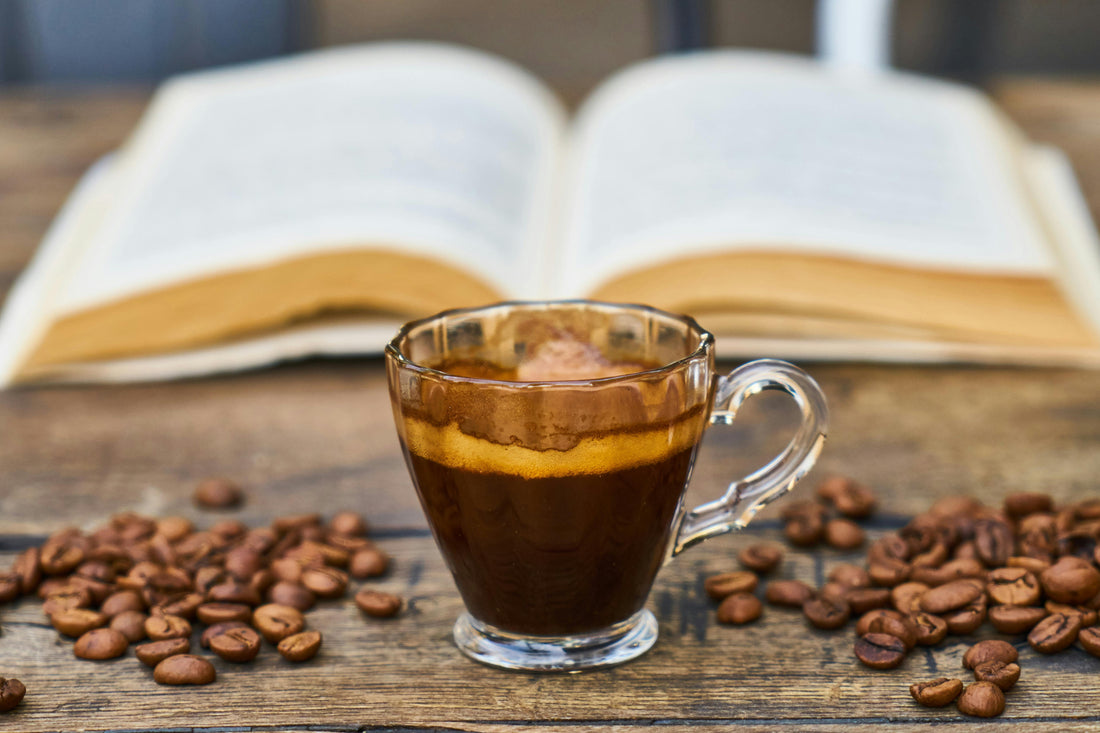
The Ultimate Espresso Challenge: How to Ensure Every Cup is a Crowd-Pleaser
Share
Imagine you're at a dinner party, and the conversation's electric. You're laughing, maybe even debating aliens or the mysteries of consciousness—topics you only discuss with your closest circle.
Suddenly, the host offers espresso, and you brace for that rich, aromatic treat. But it falls short. It's too bitter, too sour, or worse, it's watery. As the host, you'd hate for this to happen on your watch.
Crafting a good espresso, let alone a consistently excellent one, can feel like you're trying to solve a puzzle while blindfolded. But fear not; sorting out the intricacies of espresso isn't as cryptic as unraveling the mysteries of the universe.
Let's get into the art and science of making an espresso that's pitch-perfect every single time.
Caffeine Symphony

First things first—great espresso is like a symphony of precise elements harmonizing together. It's not just about hitting a button on a shiny machine.
The grind size, for instance, plays a crucial role. If your grind is too coarse, water rushes through too easily, leaving you with something more bland than bold. On the flip side, too fine a grind means water struggles to pass through, resulting in a bitter mess.
Achieving that sweet spot—a grind consistency resembling fine beach sand—can make all the difference. Once you've nailed the grind, you're already on track to making espresso the centerpiece of your hospitality.
Beans - The Key To It All

Then there’s the coffee itself; not all beans are created equal. Selecting your beans is similar to picking a book from a vast library. Just like meeting an interesting character, each bean brings something unique to your cup.
You might love a bean with hints of chocolate for its warm, familiar notes or perhaps one with fruity undertones for a refreshing twist. The key here is to get fresh, quality beans—ideally, roasted within the last two weeks.
This helps preserve the precious oils that make your espresso burst with flavor. Your guests might not notice exactly what's delightful about your espresso, but they'll feel it. Meanwhile, you'll know it's that meticulously chosen, freshly roasted bean working its magic.
That’s Some High Quality H20

Remember your water, too—often the most overlooked player in the espresso game. Think about it: espresso is mostly water, so using anything less than high-quality H2O can dull your efforts.
Invest in a good water filter (like this one here) to ensure purity or splash out on a quality bottled option. Water hardness matters. Too much mineral content can confuse your taste buds and your espresso machine alike.
When you get the water right, you make sure the notes of your coffee bean, whether nutty, sweet, or darkly caramel, dance like nobody's watching.
Too hot, too cold, or just right?
Temperature control is your espresso’s unsung hero. You should aim for that ideal temperature range—around 195-205 degrees Fahrenheit. Too hot, and you risk extracting bitter compounds; too cool, and your coffee lacks dimension.
Many modern machines come with sophisticated systems to keep the water just right. It’s a bit like setting the mood lighting at a party—not so bright everyone notices, but not dim enough to miss the expression on someone’s face when they try their first sip of your espresso.
Under Pressure

Espresso pressure is another daunting but essential player. Traditional espresso machines use around nine bars of pressure to extract the right flavors from the coffee.
That pressure, think of it as you applying balanced force in your workouts, ensures a dense, flavorful espresso shot with a luscious crema—the golden, creamy layer that sits atop your espresso like a proud crown.
You'll need a good espresso machine for this, yes, but it doesn't have to cost as much as your rent. Look for reliability and consistency, not unnecessary luxury.
Tamping - What even is that?
Now, let's discuss the art of tamping—pressing down the coffee grounds in your portafilter with consistent pressure. Imagine you're packing a suitcase for a much-awaited vacation: you want everything tightly in place without breaking your favorite bottle of perfume.
Tamping well ensures the coffee resists the water evenly, much like controlling traffic flow. It's an often neglected element but one that distinguishes an artisan espresso from common coffee shop fare.
Timing is Everything
Timing is, after all, everything. The extraction time for a shot of espresso should reside in the 25 to 30-second window. Any less and you're under-extracting; the flavor profile runs short of its potential.
Any more, and you’re in over-extraction territory where bitterness reigns supreme. It's similar to cooking pasta al dente: just the right amount of resistance is where the satisfaction lies.
Paying close attention to your timing can turn even a mundane moment of routine into a skillful display of your espresso-making prowess.
Hostess With The Mostest

As a gracious host, using fresh milk and mastering your milk frothing technique can elevate the espresso experience to an entirely new level. Just like making good use of space when arranging furniture, an elegantly foamed milk complements your espresso’s robust flavor.
It’s about getting the right textures—dense and velvety without losing the creamy charm. Training your hand to roll the milk pitcher just right may need some practice, but the gratifying compliments from your guests will be well worth the effort.
Goldilocks, Anybody?
Did you know even the cup matters in this whole espresso endeavor? A smaller, thicker-walled cup retains heat better, allowing those intricate flavors to stay intact longer.
Presenting your espresso with a sense of occasion—a neat saucer, maybe a silver spoon—adds flair that guests will undoubtedly appreciate. In an age dominated by the churn of daily life, these small acts of hospitality create memorable experiences worth cherishing.
Cleaning Isn’t Just For Springtime

Finally, there’s the importance of seasoning your equipment with regular cleaning. An unspoiled espresso shot demands a machine that’s just as well-maintained.
Many a brew has scorned palates simply because of neglected cleaning routines allowing stale oils and coffee residues to mingle with fresh shots. Make a ritual out of cleaning your machine—a little TLC goes a long way, ensuring every shot is as good as the last.
After all, a well-maintained machine is like a trusty companion, always ready for the next coffee adventure.
In the world of espresso, consistency is your love letter to your guests.
From finding that perfect grind to choosing the right beans and ensuring your machine runs as smoothly as a well-oiled clock, every detail matters in creating an espresso experience that echoes like a pleasant memory.
Embrace these rituals as part of your hospitality, turning a simple espresso shot into an expression of your care and attention to detail. Remember, the journey to mastering anything worthwhile is full of little tweaks and adjustments.
As you refine the brew and enjoy each small triumph, you’d find, that the pursuit of perfection in creativity and craft is as satisfying as it is delicious.
